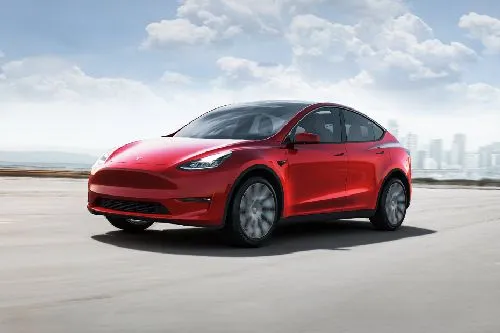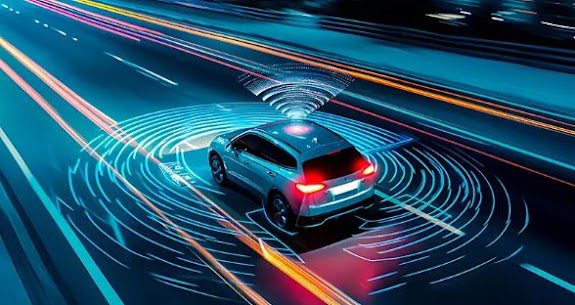
In recent years, the world has witnessed a significant shift in the way people think about transportation. As cities continue to grow and environmental concerns escalate, there has been an increasing demand for innovative solutions that can reduce carbon emissions and improve urban mobility. One of the most promising responses to these challenges has been the rise of Electric Mobility Solutions. These technologies are revolutionizing the transportation sector, offering cities an opportunity to embrace more sustainable, efficient, and eco-friendly means of getting from one place to another.
This article will explore the concept of Electric Mobility Solutions, their impact on urban environments, and how they are helping to pave the way for sustainable cities. By examining the types of electric mobility solutions available, their benefits, challenges, and real-world applications, we can gain a deeper understanding of their potential to transform cities into more livable, cleaner, and healthier places for future generations.
The Evolution of Electric Mobility
Historically, transportation has been a major contributor to environmental pollution. The internal combustion engine (ICE) that powers most cars today emits vast amounts of carbon dioxide and other harmful pollutants, contributing significantly to climate change. In recent decades, however, technological advancements have paved the way for cleaner alternatives. Electric vehicles (EVs) have emerged as a promising solution to reduce the carbon footprint of urban transportation.
At the heart of Electric Mobility Solutions is the idea of replacing traditional fuel-based vehicles with electric alternatives. Electric vehicles, including electric cars, buses, scooters, and bikes, use electricity stored in batteries to power their engines, eliminating the need for gasoline or diesel fuels. This shift is not only reducing air pollution but is also decreasing noise pollution, making cities quieter and more pleasant to live in.
Types of Electric Mobility Solutions
There are several types of Electric Mobility Solutions that are already being implemented in cities around the world. These solutions range from personal electric vehicles to shared electric transportation systems, each designed to meet specific urban needs.
1. Electric Cars
Electric cars are the most well-known type of Electric Mobility Solutions. They offer a viable alternative to traditional gasoline-powered vehicles and have become a symbol of the transition to sustainable transportation. With companies like Tesla, Nissan, and Chevrolet leading the charge, electric cars are becoming more affordable, efficient, and accessible.
The advantages of electric cars are manifold. They produce zero tailpipe emissions, reducing the overall carbon footprint. Additionally, electric cars have fewer moving parts compared to internal combustion engine vehicles, which means lower maintenance costs. As the global electricity grid becomes greener, the carbon footprint of electric vehicles continues to decrease, making them even more sustainable.
2. Electric Bikes and Scooters
In addition to electric cars, electric bikes and scooters are gaining popularity in urban areas. These vehicles are ideal for short-distance travel, offering a practical and eco-friendly alternative to traditional cars. Many cities are adopting bike-sharing and scooter-sharing programs, which provide an affordable and convenient way for people to get around without owning a vehicle.
Electric bikes and scooters are perfect for navigating crowded urban areas, as they require less space than cars and can be used in bike lanes or on pedestrian paths. They also have lower environmental impacts, making them an essential part of Electric Mobility Solutions for sustainable cities.
3. Electric Public Transit
Public transportation plays a critical role in reducing traffic congestion and pollution in cities. Electric buses are becoming increasingly common in public transit systems around the world. These buses are powered by electricity, making them far cleaner and more efficient than their diesel counterparts.
Electric buses have the potential to revolutionize public transport by providing cleaner, quieter, and more sustainable options for commuters. Cities such as Shenzhen, China, have already made significant strides in electrifying their public transportation fleets, proving that large-scale electric mobility is feasible and beneficial.
4. Electric Delivery Vehicles
As e-commerce continues to grow, the need for efficient and sustainable delivery systems has never been more important. Electric delivery vehicles, such as vans and trucks, are being introduced as part of Electric Mobility Solutions to reduce the environmental impact of last-mile delivery services. These electric vehicles are designed to handle the delivery of goods in urban environments while producing zero emissions.
The adoption of electric delivery vehicles will be crucial for reducing the carbon footprint of the logistics industry. As cities move toward stricter environmental regulations, the shift to electric delivery fleets is becoming a necessity for companies aiming to reduce their environmental impact.
Benefits of Electric Mobility Solutions
The widespread adoption of Electric Mobility Solutions offers numerous benefits to both individuals and cities. These benefits extend beyond environmental impacts and encompass economic, social, and health advantages.
1. Environmental Sustainability
The most obvious benefit of electric mobility is its positive impact on the environment. Traditional vehicles powered by gasoline and diesel are major contributors to air pollution and greenhouse gas emissions. By switching to electric vehicles, cities can significantly reduce their carbon footprint.
Electric vehicles produce zero tailpipe emissions, which means they do not contribute to smog or poor air quality. Additionally, as the electricity grid becomes increasingly powered by renewable energy sources like wind, solar, and hydroelectric power, the environmental benefits of electric mobility continue to grow.
2. Reduced Noise Pollution
One of the less discussed benefits of Electric Mobility Solutions is the reduction of noise pollution. Electric vehicles, particularly electric cars, are much quieter than their internal combustion engine counterparts. This reduction in noise can lead to more peaceful and enjoyable urban environments.
Noise pollution is a significant issue in many cities, particularly in dense urban areas. By replacing noisy gasoline-powered vehicles with quieter electric alternatives, cities can improve the quality of life for their residents.
3. Cost Savings
Although electric vehicles often have a higher initial purchase price compared to traditional vehicles, they offer significant long-term savings. Electric vehicles have fewer moving parts, which means lower maintenance costs. The cost of electricity to charge an electric vehicle is also typically lower than the cost of gasoline or diesel, making electric mobility a more economical choice over time.
Additionally, governments and municipalities are offering incentives and subsidies to encourage the adoption of electric vehicles, further reducing the cost barrier.
4. Improved Public Health
Air pollution from traditional vehicles is a major contributor to respiratory illnesses and other health problems in urban areas. By adopting Electric Mobility Solutions, cities can reduce the harmful emissions that contribute to poor air quality, ultimately improving public health outcomes.
In addition, the quieter nature of electric vehicles reduces noise-related stress and health issues, further enhancing the well-being of city dwellers.
Challenges and Barriers to Adoption
While the benefits of Electric Mobility Solutions are clear, there are still several challenges to overcome before electric mobility can become the norm in cities worldwide.
1. Charging Infrastructure
One of the main obstacles to the widespread adoption of electric vehicles is the lack of charging infrastructure. Unlike gasoline-powered vehicles, electric vehicles require charging stations, and the availability of these stations varies greatly from one city to another. To address this issue, governments and private companies must invest in the expansion of charging networks to ensure that electric vehicle owners can easily access charging points.
2. High Upfront Costs
Although electric vehicles offer long-term cost savings, the upfront costs can still be prohibitive for many consumers. Despite falling prices, electric vehicles remain more expensive than their gasoline counterparts. Subsidies, incentives, and tax breaks can help mitigate this barrier, but the high initial purchase price remains a challenge.
3. Range Anxiety
Many consumers are still hesitant to adopt electric vehicles due to concerns about range anxiety—the fear of running out of battery power before reaching a charging station. While electric vehicle range has improved in recent years, it remains a concern for many potential buyers, particularly those who regularly drive long distances.
4. Limited Vehicle Options
Although the number of electric vehicle models available has increased, there are still fewer options compared to traditional vehicles. Consumers may find it challenging to find an electric vehicle that meets their specific needs, particularly for larger families or those requiring vehicles with significant cargo space.
Real-World Applications of Electric Mobility Solutions
Several cities around the world are already embracing Electric Mobility Solutions and reaping the benefits. Cities like Oslo, Norway, and Amsterdam, the Netherlands, have become global leaders in electric mobility, with high adoption rates of electric vehicles, extensive charging networks, and policies that promote sustainable transportation.
In Shenzhen, China, the entire public bus fleet has been electrified, making it the first city to have a fully electric bus system. This move has drastically reduced the city’s carbon emissions and has set a global example for how electric mobility can transform public transport.
In North America, cities like San Francisco and Los Angeles are working to integrate electric vehicles into their transportation systems. These cities are investing in charging infrastructure and offering incentives for residents to switch to electric vehicles, helping to reduce air pollution and create a more sustainable future.
Conclusion
As cities around the world continue to face the challenges of population growth, traffic congestion, and environmental degradation, Electric Mobility Solutions offer a promising path forward. From electric cars and bikes to electric buses and delivery vehicles, these technologies are revolutionizing urban transportation and paving the way for more sustainable cities. The adoption of electric mobility is not without its challenges, but the long-term benefits in terms of environmental sustainability, public health, and economic savings make it an essential component of the urban planning landscape. By embracing Electric Mobility Solutions, cities can create cleaner, quieter, and more livable environments for their residents and help secure a better future for generations to come.






